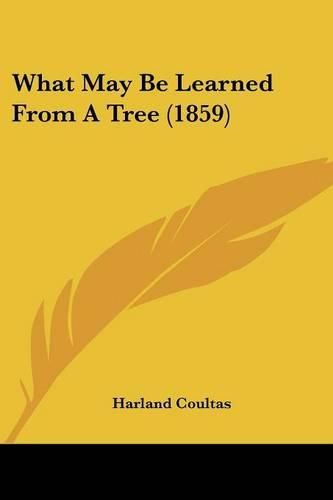Readings Newsletter
Become a Readings Member to make your shopping experience even easier.
Sign in or sign up for free!
You’re not far away from qualifying for FREE standard shipping within Australia
You’ve qualified for FREE standard shipping within Australia
The cart is loading…






Purchase of this book includes free trial access to www.million-books.com where you can read more than a million books for free. This is an OCR edition with typos. Excerpt from book: CHAPTER III. THE INNER ORGANIZATION OF TREES, OR A DESCRIPTION OF THE ANATOMY AND PHYSIOLOGY OF THE DIFFERENT SPECIES OF CELLS WHICH ENTER INTO THE COMPOSITION OF THEIR TISSUES. Ip we wish to recognize the law according to which the tree is built up out of its parts as a compound harmonious whole, we must first resolve the representation of the whole into that unit which lies at the foundation of its superstructure. This we have already done, to some extent, in the two previous chapters. Taking the tree, in the most extended signification of the term, as a separate individual or unit with reference to a forest, we have shown that this individual tree consists of a number of individual plants of a highly composite character called branches, which differ from the entire tree itself only in the smaller scale on which they are constructed, and which actually prefigure the amount of growth of that tree at an earlier stage of its life. These branches are formed by a union of yet simpler individuals called shoots, and the shoots themselves are built up by phytons or leaves, individuals or units which rank still lower in the series. In this manner we have been led to the leaf as the fundamental organ in the building up of the tree-form. But this analysis may be carried much further. It may be applied to the inner organization of the tree. Thus the axis or stem separates into two distinct systems, the bark and the wood, as the two highest units of its anatomical composition. Each of these systems again resolves itself into a repetition of single annual layers. If we examineone of these layers with a microscope, we shall find it also to be a compound, and that it can be resolved into individuals having distinct peculiarities of form and function, called cells. We have now arrived a…
$9.00 standard shipping within Australia
FREE standard shipping within Australia for orders over $100.00
Express & International shipping calculated at checkout
Purchase of this book includes free trial access to www.million-books.com where you can read more than a million books for free. This is an OCR edition with typos. Excerpt from book: CHAPTER III. THE INNER ORGANIZATION OF TREES, OR A DESCRIPTION OF THE ANATOMY AND PHYSIOLOGY OF THE DIFFERENT SPECIES OF CELLS WHICH ENTER INTO THE COMPOSITION OF THEIR TISSUES. Ip we wish to recognize the law according to which the tree is built up out of its parts as a compound harmonious whole, we must first resolve the representation of the whole into that unit which lies at the foundation of its superstructure. This we have already done, to some extent, in the two previous chapters. Taking the tree, in the most extended signification of the term, as a separate individual or unit with reference to a forest, we have shown that this individual tree consists of a number of individual plants of a highly composite character called branches, which differ from the entire tree itself only in the smaller scale on which they are constructed, and which actually prefigure the amount of growth of that tree at an earlier stage of its life. These branches are formed by a union of yet simpler individuals called shoots, and the shoots themselves are built up by phytons or leaves, individuals or units which rank still lower in the series. In this manner we have been led to the leaf as the fundamental organ in the building up of the tree-form. But this analysis may be carried much further. It may be applied to the inner organization of the tree. Thus the axis or stem separates into two distinct systems, the bark and the wood, as the two highest units of its anatomical composition. Each of these systems again resolves itself into a repetition of single annual layers. If we examineone of these layers with a microscope, we shall find it also to be a compound, and that it can be resolved into individuals having distinct peculiarities of form and function, called cells. We have now arrived a…